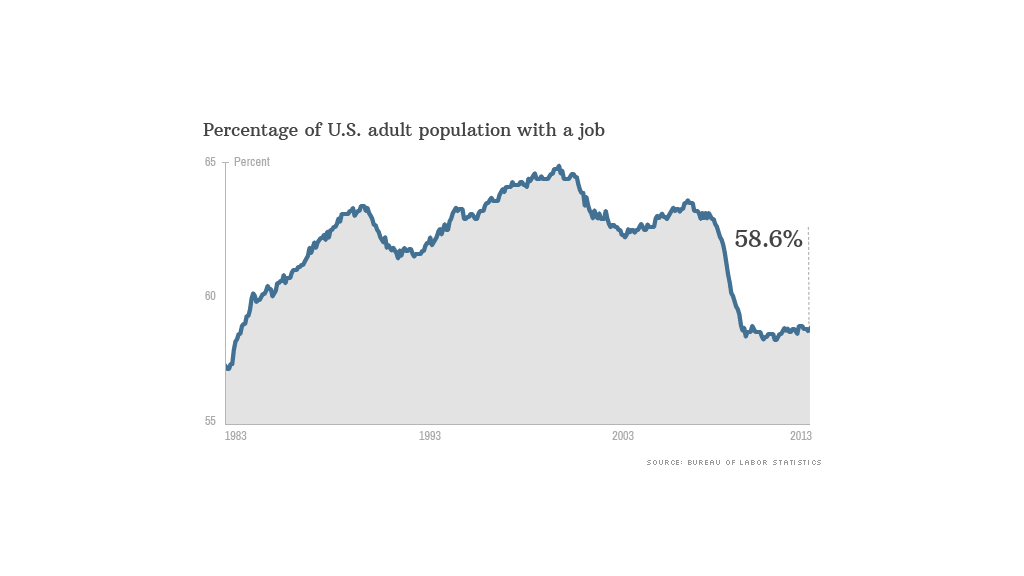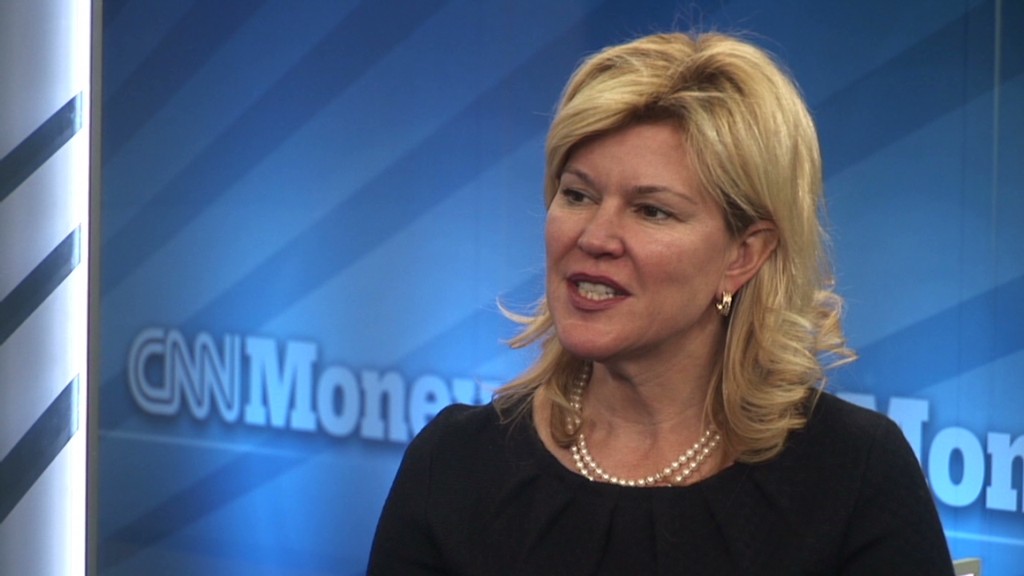
Forget the unemployment rate. The employment rate -- the percentage of adult Americans who hold a job -- has barely budged in the past three years.
It's hovering near its lowest level in three decades, and it's unlikely to improve when the Labor Department releases its May jobs report on Friday.
About 58.6% of the civilian population over age 16 had a job as of April, according to the U.S. Bureau of Labor Statistics. This rate -- officially called the "employment-population ratio" -- has been stuck in that range for several years. The last time it was this low was in 1983.
Looking at the job market using that measure paints a stark picture. Sure, companies have been hiring, but they've been creating jobs at a pace that merely keeps up with recent population growth. It's not enough to also make up for the jobs lost in the crisis.
That's why the needle simply hasn't moved.
Related: Unemployment problem is bigger than NYC and LA combined
Contrast that with the tale told by the unemployment rate, which fell from 10% in October 2009 to 7.5% in April. The unemployment rate only includes jobless people who have searched for work in the last four weeks. It skips over those who left the labor force entirely because they retired, went back to school, or simply gave up on finding a job.
"The unemployment rate is really not that helpful right now in understanding trends in job opportunities because we've had so many dropouts," said Heidi Shierholz, an economist at the Economic Policy Institute, a liberal research group.
The employment-population ratio isn't perfect either.
Over time, it's expected to decline as the U.S. population ages. Eventually, a wave of Baby Boomer retirements will leave a smaller proportion of the U.S. population participating in the workforce.

But once you strip out the retirement effect to look at the employment rate only for workers ages 25 to 54 -- those who should be in the prime of their careers -- the story of stagnation remains. The employment rate for that population was 75.9% as of April. It, too, has barely changed over the last three years, and matches levels not seen since 1984.
Even Federal Reserve Chairman Ben Bernanke, at a press conference in December, nodded to this indicator as a worrying sign of "discouragement about the state of the labor force."
Shierholz calls the employment rate the single best measure on the job market right now.
"It's my desert-island indicator," she said. "If I'm an economist on a desert island, and I had one measure to look at, this is the one I'd want."
Related: Recession ended 4 years ago: How far have we come?
The bad news is that it's unlikely to improve any time soon.
The U.S. adult population grows by about 200,000 people each month, and in the last 12 months, the economy has added an average of 173,000 jobs each month.
Economists surveyed by CNNMoney are expecting a slight slowdown in hiring. They're estimating that employers added only 158,000 jobs in May.
"This reflects an economy that has hit yet another soft patch," said Sal Guatieri, senior economist at BMO Capital Markets.
There are myriad reasons why hiring remains so slow: across-the-board federal budget cuts are in progress, employers are still uncertain about how health care reform measures will affect their businesses in 2014, banks remain on the edge about Wall Street reform, and slower growth in Europe and China is hurting international trade.
The underlying story just isn't changing. The U.S. recovery remains slow, and so does hiring.






